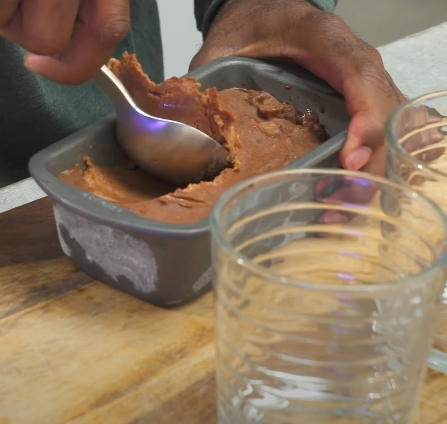In 2007, Mackie Shilstone’s book, Lean & Hard – the body you’ve always wanted in 24 workouts – was published by John Wiley & Sons. L&H offered a comprehensive six week, four workouts
per week diet, nutritional supplement schedule, resistive exercise, and sprint-interval program – designed to increase lean muscle mass.
The L&H book was based on a research study of Shilstone’s concepts that followed a cross section of athletes and non-athletes over six weeks, when he was an Associate Professor in the LSU School of Public Health and Preventive Medicine.
One of the nutritional supplements tested in the applied research study and utilized in Lean & Hard was creatine – an organic acid that is created internally from the action of the amino acids arginine, glycine, and methionine, which are constructed in the liver and regulated through kidney function.
Creatine predominantly resides in skeletal muscle – mostly as phosphocreatine – with roughly two percent degrading to creatinine, a metabolic by-product, which is why too much creatine may skew a creatinine clearance test assessing kidney function.
Creatine use by athletes has been widely studied for its side effect of weight gain, which was initially thought to be fluid gain, but with years of research, is now determined to be lean muscle development, when used correctly.
Shilstone came to a conclusion, after observing the results of an LSU applied study and his continued research on creatine, that someday creatine monohydrate would offer additional benefits to an ageing population – specifically to address sarcopenia – the age- related loss in muscle strength (dynapenia), muscle mass, muscle quality, and physical performance (frailty issues).
That day has now arrived.
New research – Current Evidence and Possible Future Applications of Creatine Supplementation for Older Adults – which appeared in the March 2021 online, peer- reviewed journal Nutrients – comments that, “sarcopenia typically occurs in 8–13% of adults ≥60 years of age, and, is associated with other age-related health conditions, such as osteoporosis, osteosarcopenia (muscle related bone loss), sarcopenic obesity, physical frailty, and cachexia (muscle loss due to disease).”
Muscle mass decreases by 0.45% in men and by 0.37% in women. However, these decrements climb to 0.9% for men and to 0.7% for women starting in their seventh decade.
The age-related decrease in muscle strength – a strong predictor of poor health outcomes, such as mobility disability, falls, fractures, and mortality in older adults – occurs more rapidly (2–5 times fold faster) than the reduction in lean (muscle) mass.
The Canadian and Australian study authors performed a narrative review evaluating the current research involving creatine (CR), with and without resistive training (RT), on properties of muscle and bone in older adults, “in order to provide a rationale and justification for future research involving CR in older adults with osteosarcopenia, sarcopenic obesity, physical frailty, or cachexia.”
Here’s what was determined.
As it pertains to addressing sarcopenia, “CR (≥3 grams/day) and RT (≥7 weeks; primarily whole-body routines) can improve some measures of muscle accretion, strength, and physical performance in older adults. Independent of RT, a CR loading phase and/or high relative daily dosage of creatine (≥0.3 g/kg/day) may be required to produce some muscle benefits in older adults.”
Relative to creatine monohydrate usage with osteoporosis – the age-related loss of bone mineral density – “collectively, the vast majority of studies show no greater effect from CR, with and without RT, on properties of bone in older adults.”
For use with sarcopenic obesity, which the researchers say occurs in approximately 20% of the older adult populations, “CR and RT appear to be an effective intervention for decreasing body fat% in older adults. However, the effects of CR alone on adipose tissue biology in older adults are unknown.”
With respect to physical frailty – a syndrome of physiological decline in later life, characterized by vulnerability to adverse health outcomes (hospitalizations, falls, social=isolation, and reduced quality of life) – “despite the preclinical and clinical evidence demonstrating an effect from creatine on multiple pathophysiological mechanisms associated with frailty, no RCT has been performed examining the effects of CR (alone or in combination with exercise) in frail older adults.”
As to CR reducing the impact of cachexia – muscle tissue wasting and severe weight loss from cancer, COPD, chronic kidney disease, and heart failure – the researchers concluded that, “creatine has the potential to target several of the mechanisms associated with cachexia; however, research investigating the effects of creatine and cachexia is very limited.
The initial creatine utilization protocols with resistive training and explosive-type events, such as American Football and combative sports, called for a loading phase of 20 grams per day (5 grams four time daily) for 5 days followed by 5-10 grams per day for a maintenance phase for the prescribed time period.
Over time, that protocol has evolved to a 3-day loading phase of 20 grams per day, followed by 5 grams per day for the maintenance phase.
My Sports and Lifestyle Nutritionist, Jodie Muhleisen, a Registered Dietitian Nutritionist, certified in sports nutrition, who has worked with Shilstone’s various sports performance, fitness, and wellness hospital-affiliated programs over the last decade, reinforces that, “we first established that each creatine utilization candidate met the appropriate medical (normal kidney and liver function) and performance criteria.”
Then, “once the 3-day loading phase is complete, 5 grams of creatine per day is used, only on days in which resistive or explosive-type training is performed – with a combined loading and maintenance phase of six weeks.”
As referenced in the Nutrients study, other creatine protocols call for between 0.3 grams/kilogram/day to 0.1 grams/kg/day, as determined in conjunction with the guidance of your personal physician and dietitian, who is experienced in managing a creatine protocol.
Interested in Listening to a Podcast? Check out Maximum Wellness, Episode 68: How to Offset the Effects of Age-Associated Muscle Loss






